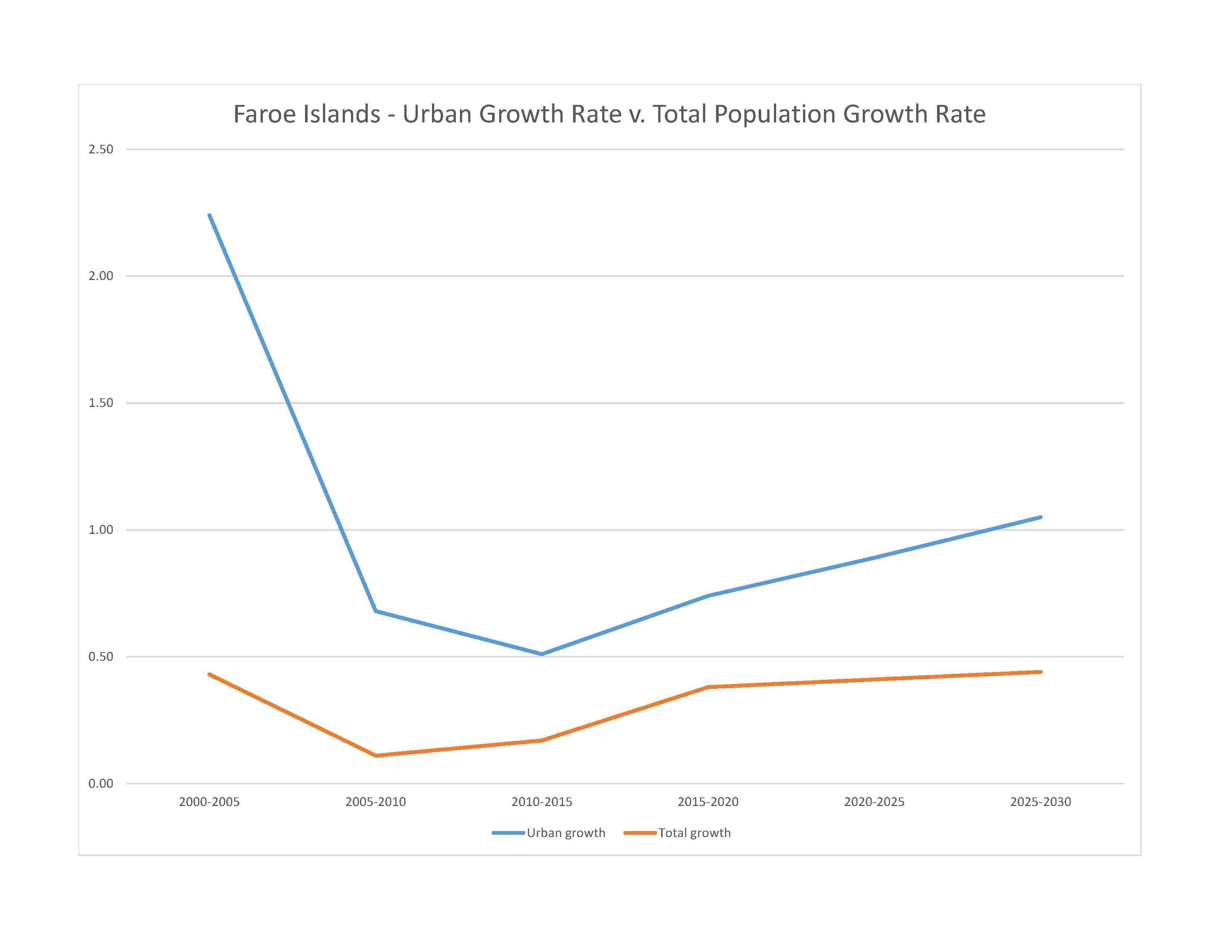
52,600 (2023 est.)
noun: Faroese (singular and plural)
adjective: Faroese
Faroese 85.3% (Scandinavian and Anglo-Saxon descent), Danish 8.3%, other Nordic 1.4%, other 4.5% (includes Filipino, Poland, Romanian) (2022 est.)
note: data represent respondents by country of birth
Faroese 93.8% (derived from Old Norse), Danish 3.2%, other 3% (2011 est.)
note: data represent population by primary language
Christian 89.3% (predominantly Evangelical Lutheran), other 1%, none 3.8%, unspecified 6% (2011 est.)
0-14 years: 19.9% (male 5,415/female 5,053)
15-64 years: 61.94% (male 17,211/female 15,367)
65 years and over: 18.16% (2023 est.) (male 4,621/female 4,933)
total dependency ratio: 62.8
youth dependency ratio: 33.6
elderly dependency ratio: 29.1
potential support ratio: 3.4 (2021)
total: 36.8 years (2023 est.)
male: 36.8 years
female: 36.8 years
0.63% (2023 est.)
14.9 births/1,000 population (2023 est.)
8.6 deaths/1,000 population (2023 est.)
0 migrant(s)/1,000 population (2023 est.)
the island of Streymoy is by far the most populous with over 40% of the population; it has approximately twice as many inhabitants as Eysturoy, the second most populous island; seven of the inhabited islands have fewer than 100 people
urban population: 43% of total population (2023)
rate of urbanization: 0.89% annual rate of change (2020-25 est.)

21,000 TORSHAVN (capital) (2018)
at birth: 1.07 male(s)/female
0-14 years: 1.07 male(s)/female
15-64 years: 1.12 male(s)/female
65 years and over: 0.94 male(s)/female
total population: 1.08 male(s)/female (2023 est.)
total: 5.9 deaths/1,000 live births (2023 est.)
male: 6.5 deaths/1,000 live births
female: 5.2 deaths/1,000 live births
total population: 81.5 years (2023 est.)
male: 79 years
female: 84.2 years
2.28 children born/woman (2023 est.)
1.1 (2023 est.)
N/A
improved: urban: N/A
rural: N/A
total: 100% of population
unimproved: urban: N/A
rural: N/A
total: 0% of population (2020)
N/A
2.62 physicians/1,000 population (2016)
4.2 beds/1,000 population (2016)
improved: urban: N/A
rural: N/A
total: N/A
unimproved: urban: N/A
rural: N/A
total: N/A
N/A
34.8% (2023 est.)
7.6% of GDP (2019 est.)
total population: NA
male: NA
female: NA
NOTE: The information regarding Faroe Islands on this page is re-published from the 2024 World Fact Book of the United States Central Intelligence Agency and other sources. No claims are made regarding the accuracy of Faroe Islands 2024 information contained here. All suggestions for corrections of any errors about Faroe Islands 2024 should be addressed to the CIA or the source cited on each page.
This page was last modified 04 May 24, Copyright © 2024 ITA all rights reserved.